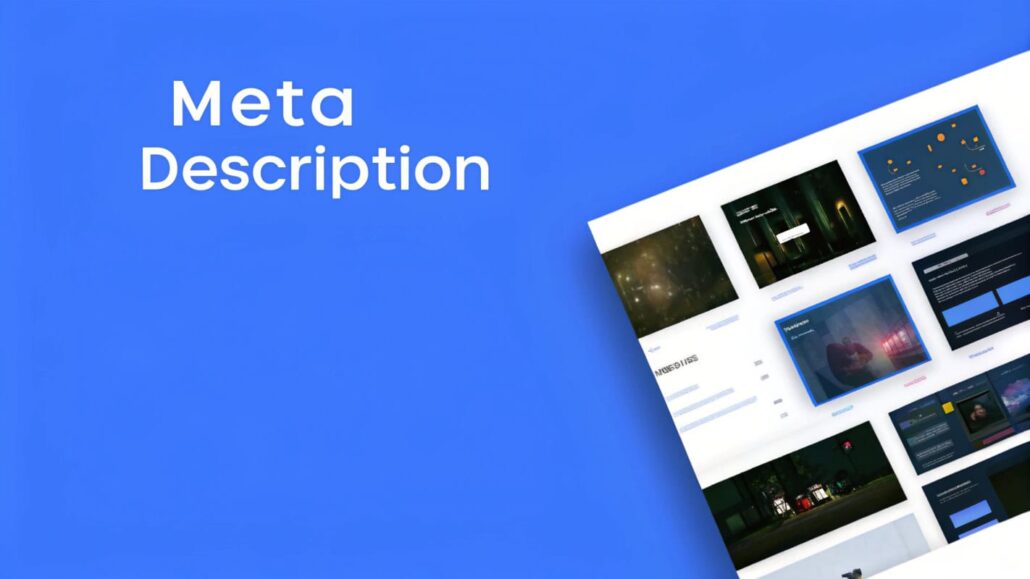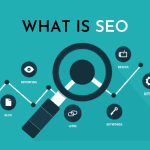
Boost Your SEO With Meta Description
Crafting a thoughtful meta description is a twofold approach in enhancing your site’s SEO and visibility on search engines. It is a small snippet of text that helps users decide whether to click on your webpage or skip to the next one. How can you create a meta description that is convincing enough to get more clicks and adheres to your SEO strategy?
This guide offers effective strategies and suggests specific actions that you can take to write meta descriptions aimed at improving your site’s performance in web analytics. With this information, you can design eye-catching descriptions that will capture the attention of your audience and Google, making it easier to gain more traffic through search results.
What is a Meta Description?
A meta description is a synopsis for a specific webpage, summarizing the webpage’s content and provided during searches on search engines. As a preview to entice visitors, it appears underneath the title or headline in the search engine results pages (SERPs). It helps the user decide whether or not to click on your site. It is usually from 50 to 160 characters.
Here is an example for a blog post about effective time management:
“Struggling to stay productive? Learn 10 proven time management strategies to Work Smarter, Not Harder with this expert guide.”
It provides a small glimpse of what the user will find. In this way, the meta description works like a sales pitch. It helps improve CTR as well. If users are provided with a catchy meta description which is seeking their attention, it aids in increasing the number of times your link is clicked, hence leading to increase in the CTR and hence traffic.
Why Meta Descriptions Matter for SEO
Even though google have said that they do not affect rankings, a well written meta description enhances SEO efforts. It lacks primary impact but provides support in the following ways:
- Improved CTR: Meta descriptions convey important information about the webpage. Hence clear description of page would aid in increasing user satisfaction.
- Importance of Including Keywords: Incorporating pertinent keywords in your meta description can improve matching with user intent, thereby increasing the likelihood of appearing for associated queries.
- Improved User Engagement: With an appealing and succinct description, users set clear expectations regarding the content, thus minimizing the likelihood of them leaving the page immediately.
- Compelling Description for Competitive Pages: Clicking on your site becomes more favorable compared to many other options when a unique and appealing description is provided as opposed to generic descriptions provided by other competitors.
Essential Elements of Meta Descriptions
Prior to drafting, verify that every benchmark mentioned below is a part of your meta description.
- Clear and Concise to Character Limit
Google showcases a maximum of 150 to 160 characters in meta descriptions. Any text that exceeds this limit is not displayed. Ensure that your description portrays the essence of your content and is focused by utilizing all words carefully. - Use of Relevant Keywords
Your primary keyword should be included along with one to two relevant secondary keywords. As an example:
Boost your website’s traffic today with our expertly crafted meta description designed to enhance SEO!”
This assists users identify the content they are searching for, as well as helps search engines understand your page’s relevance.
- Action-Oriented Language
Encourage users to engage further with your services by using actionable phrases and verbs. “Boost,” “learn,” “discover,” “find out,” and “get started” are examples of phrases that highlight clear advantages.
- Uniqueness
Meta descriptions should not be duplicated across several pages. Each description should be tailored to capture the distinctive attributes of the page it represents.
- Clarity and Precision
Your description must accurately capture the content of the page. Providing inaccurate information leads to a loss of trust which can increase the bounce rate.
- Brand Alignment
Brand voice, be it playful, professional or chatty, should show throughout the text. This improves relatability and engages readers with the brand.
How to Write an Engaging Meta Description
To write appealing meta descriptions, follow these steps:
- Define Your Audience
Who would you like to engage? Do they seek guides or in-depth articles? Address them through keywords and phrases that align with their expectations.
What keywords would interest the audience? Keywords aligned with user intent can be searched using Google Keyword planner, SEMrush, and Ahrefs. Using these keywords increases relevance.
STEP 3: Emphasize the Value Proposition
Make it clear what benefit the user derives from visiting your site. For example:
“With our expert guide, learn how to write meta descriptions that boost click-through rates and improve Google rankings.”
This tells users precisely what they will gain by reading your content.
STEP 4: Add a Call to Action (CTA)
Encourage action from the users with CTAs in your meta descriptions. For instance,
- “Shop the latest styles now.”
- “Sign up for free tutorials today.”
- “Explore our expert guides and tips.”
CTAs effectively motivate users to click on your link.
STEP 5: Test and Improve
If you oversee a large website or a shop, refine your meta descriptions with A/B testing. Test different CTAs, tonal shifts, and keyword positioning to find what yields the best CTR.
Common Meta Description Mistakes That Should Be Avoided
These seemingly minor errors can lead to losses in clicks and traffic. Refrain from the following:
- Overstepping the Character Limit: Descriptions that exceed the character limit will be cut off, resulting in loss of key information.
- Keyword Stuffing: Overuse of keywords gives the description an unprofessional, spam feel.
- Vagueness: Generic phrases “Welcome to our website” do not convey any specific value.
- Duplicate Meta Descriptions: Duplicate descriptions incur user and search engine confusion.
Examples of Effective and Poor Meta Descriptions
Effective Meta Description
“Crafting the perfect meta description improves a site’s SEO, elevates clicks, and keeps readers engaged. Learn our top tips today!”
Poor Meta Description
“Meta descriptions are important. This is a guide about writing meta descriptions. Click to read more about meta descriptions.”
The first example provides ample value, keyword usage is on point, and there’s a clear call to action. The second is repetitive and unengaging with no clear value preposition.
Enhance Your SEO With Better Meta Descriptions
Improving your website’s SEO as well as user engagement begins with perfecting the often-overlooked meta descriptions. Descriptions that are precise and action-oriented substantially improve your click through rate, relevant site traffic, and overall rankings.
In case you’re short on time or feeling stuck, try Jasper, Yoast for WordPress users, or SEMrush’s SEO Writing Assistant. These tools help streamline the work and provide assurance that the descriptions will meet the required standard.
Begin implementing these strategies on your site today and observe an increase in the number of visitors.







